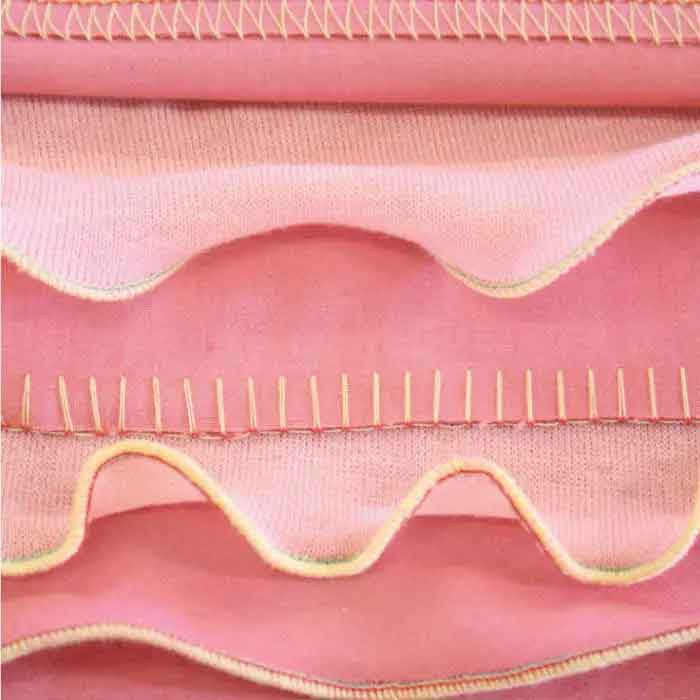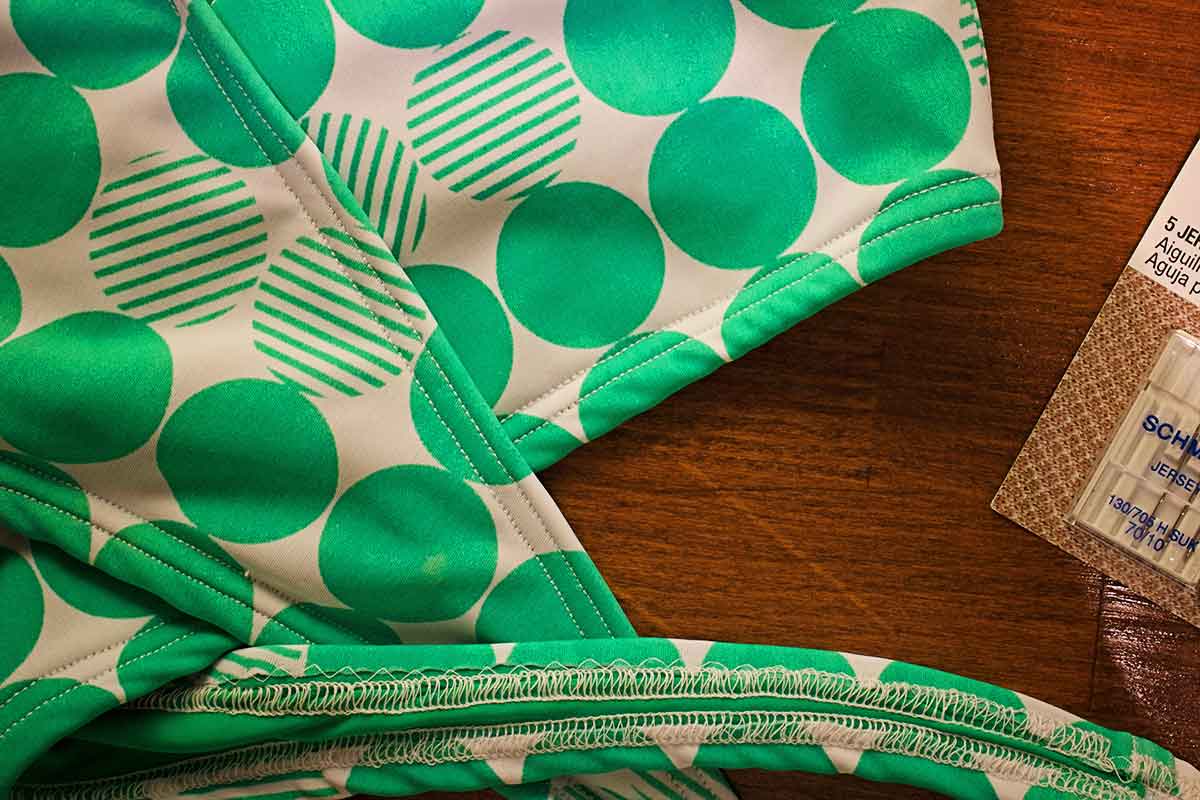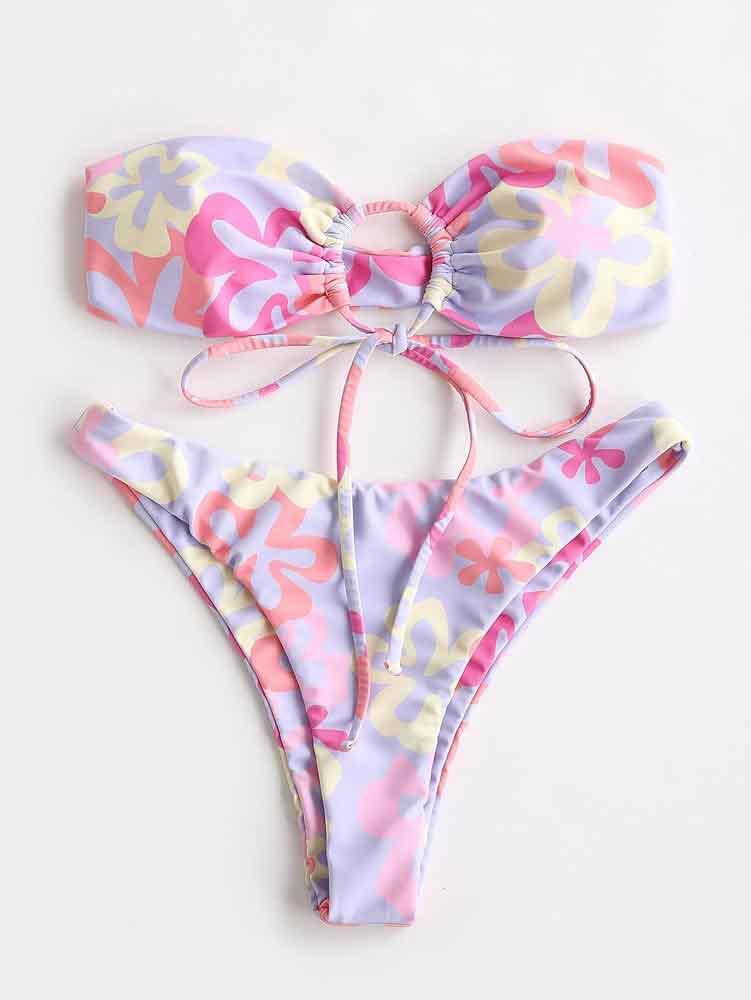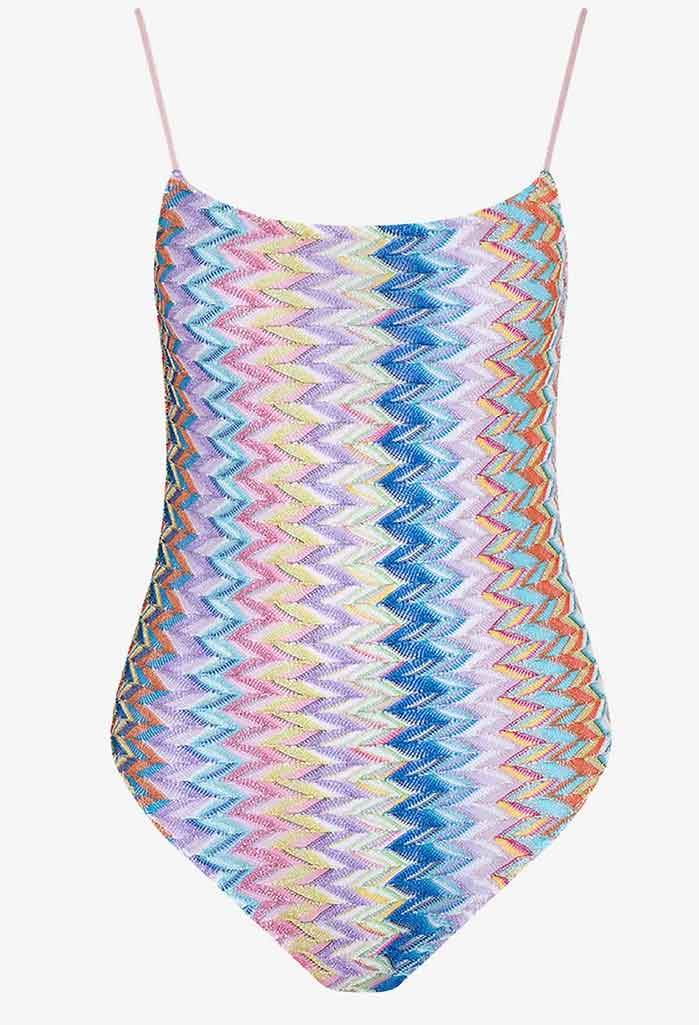Explore swimwear stitches to make your swimwear stylish and safe
Time: 2025-02-10 21:14:05
Have you noticed that some swimsuits are more comfortable or durable than others?
This largely has to do with their stitching methods!
When making swimsuits, various types of stitches are used, each offering unique advantages in terms of comfort, durability, and appearance.
The stitching of a swimsuit is not just about connecting the fabric; it is also a crucial factor in ensuring its longevity and performance.
Whether you are designing, manufacturing, or selling swimsuits,
understanding the different types of stitches can help you provide products that are not only aesthetically pleasing but also high-performing.
* Overlock
The overlock stitch is utilized to sew fabric edges together and prevent them from fraying.
It is frequently used in the inner seams of swimwear, effectively joining different pieces of fabric.

Importance: Overlock stitches keep the edges of your swimsuit neat and secure, giving it a cleaner look.
The stitches are extremely durable, extending the life of the swimsuit even in frequent contact with water, chlorine and sunlight.
Advantages:
Prevent fabric fraying.
Provides strong and long-lasting seams.
Suitable for elastic fabrics such as lycra or spandex.
Commonly found in moderately priced, mass-produced swimwear.
Disadvantages:
If not finished properly, visible seams may appear on the outside.
It can sometimes feel bulky against the skin, leading to mild irritation.
*Coverstitch
This overstitch is commonly used in swimwear hemlines and to create retractable seams.
The stitch is applied to the top of the fabric to ensure neat edges and provide a smooth finish.

Importance:Covering stitching helps to keep the fabric edges neat while providing the flexibility required for the swimsuit.
It is commonly used on skirts, waistbands, and leg openings because this stitch is able to stretch with the fabric,
allowing you to move comfortably without affecting the shape or fit of the garment.
Advantages:
Allows fabric to be stretched without causing seams to pop out.
Provide clean, professional edge treatment.
Ideal for event swimwear that requires flexibility and support.
Disadvantages:
Because this seam method requires specialized equipment, it is less common in less expensive swimwear.
If the seam is damaged or improperly made, it may result in unraveling.
*Seamless
Seamless stitching is a technique that glues fabric together without leaving visible seams, giving a smooth, uncluttered look and enhancing comfort.
This method eliminates bulky stitches and makes clothing more skin friendly. It is often used in high-end swimwear collections due to its contemporary and modern design.

Advantage: Provides a smooth and irritation-free surface that reduces resistance in the water while improving overall comfort and fit.
Disadvantages: This method requires specialized bonding technology, and due to the complexity of the process, the production cost is relatively high.
*Zigzag
Zigzag stitching is a flexible and elastic stitch that can be adjusted flexibly with the movement of the fabric,
making it ideal for swimwear that needs to be adapted to physical activity. This seam is usually used for seams or edges.

Importance: Zigzag stitches allow your swimsuit to stretch and move with you without breaking or twisting the stitches.
Whether you're diving into the pool or just lounging, this seam ensures that you stay comfortable and your swimsuit doesn't feel constricted.
Advantages:
Provides elasticity, allowing the fabric to stretch without causing stitches to pop out.
Easy to apply to different parts of the swimsuit.
This versatile sewing method is suitable for a variety of fabrics and areas, such as edges, seams or leg openings.
Disadvantages:
If not properly reinforced, the durability of high stress areas may decrease.
Frequent stretching may cause the stitch to become loose, which affects the fit.
Sustainable development and practice
The increasing emphasis on sustainability in the fashion industry is driving brands to adopt eco-friendly sewing technologies to reduce their environmental impact and attract environmentally conscious consumers;
At the same time, advances in sewing technology have increased precision and efficiency, ensuring consistency and innovation in swimwear design,
so understanding the different seam types and their applications is essential for swimwear professionals to improve product quality and meet market demands.
